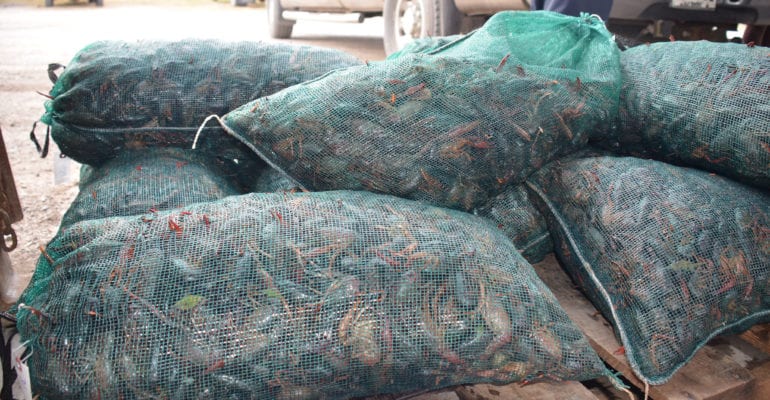In the summer of 2017, packages of Louisiana crawfish tail meat were being rejected by the Louisiana Department of Agriculture and Forestry (LDAF). Since Louisiana is home to more than 90 percent of the nation’s crawfish farms, it was a concern.
So, what in the tail was going on with Louisiana crawfish meat? “LDAF detected that there were some frozen crawfish tails underweight,” said Evelyn G. Watts, seafood technology specialist with Louisiana Sea Grant (LSG) and the LSU AgCenter.
LDAF is responsible for promoting and protecting agriculture, and consequently inspects and tests locally produced foods. Its Weights and Measures Division ensures impartiality for both sellers and buyers. The crawfish tails’ rejection was a major setback for many processors, most of whom had to recall their products.
“The industry reached out to me to ask if there was any information or if it was possible that I could provide technical information between producers and the Department of Agriculture,” Watts said. Processors feared that the LDAF’s test procedures were executed inaccurately.
“We agreed to review the method for measuring the fat on the tail meat and conduct a study on the tails to determine if the standard LDAF has for loss of fat on a tail of 10 percent maximum was okay,” said Watts.
The study spanned more than a year in which Watts and other researchers explored the mystery behind the excessive fat loss on frozen crawfish tails. They had a hunch that different peeling methods might affect resulting weight loss. “During the season, in Louisiana, there are some facilities that cook and peel the crawfish hot. A few other facilities cook, chill and then peel the crawfish. And so, we thought that doing these different methods it would change the percent of fat on the tail,” said Watts.
So, do peeling methods influence the “pass or fail” test? The answer is complicated. It turned out crawfish tails being sold in stores were not under packed. But closer examination revealed that the problem stems from the meat being frozen and thawed under not ideal conditions.
“It’s a two-component thing,” said Watts. “With frozen product there will be weight loss from drip loss as well as the loss of fat on the tail,” said Watts. “If you put crawfish in a bag, after six months of being frozen you expect to see 12 percent weight loss, which includes fat and drip loss.”
Consequently, the frozen crawfish could not adhere to the 10 percent rule. LDAF’s testing methods are better suited for fresh, refrigerated product, Watts concluded. Their standards for evaluation don’t account for processing differences.
Currently, Watts is working on a new standard for frozen product that will help solve this problem. During meetings with industry and regulators, Watts recommended forming a committee with representation from industry, consumers and regulatory agencies to review crawfish tail meat standards and inspection procedures. New standards are expected to be ready by the end of Summer 2019.
The committee also needs to develop Good Processing Practices to ensure compliance with updated standards. Changes in state law may be required to acknowledge the new standards.




